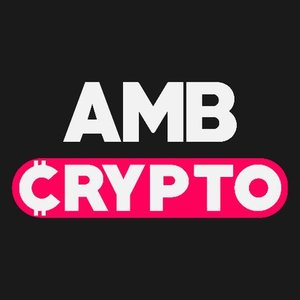Circle Isn’t Just A Crypto Company
8 min read
Summary Circle Internet is a unique, profitable stablecoin pure play with strong top-line growth and expanding margins. USDC’s adoption is accelerating, with real-world use cases like Shopify integration driving a massive total addressable market (TAM) expansion. Unlike many tech IPOs, CRCL is already profitable with impressive 43% margins. Analysts project that a massive operating leverage will drive margins toward 58% by 2027. Consensus and analyst forecasts project robust revenue and earnings growth, supporting a fair value estimate 19% above current prices. Intro and Thesis Circle Internet Group, Inc . ( CRCL ) is already a $40 billion market cap internet financial system company, which mainly focuses on providing “a suite of stablecoins and related products that include a network utility and application platform for organizations”. The firm went public in early June 2025 and started trading at $31 per share, and after getting the investors’ attention, it quickly soared above $200 per share in less than 3 weeks. Since late June, however, the CRCL stock has been consolidating, going below that $200/share mark: Seeking Alpha data, CRCL’s historical prices The sell-off, although I admit that it can last for a while, made CRCL undervalued, in my opinion, given the firm’s prospects of gaining profitability and considering its top-line expansion opportunities amid the extreme growth of TAM. I decided to rate CRCL as a “Buy” today because I think that in the long term, the uniqueness of Circle’s ecosystem should give its investors massive gains as the business momentum keeps getting stronger. Banks Are Bullish on Circle’s TAM Opportunity As Goldman Sachs analysts noted in their rating initiation report on Circle (proprietary source, June 30, 2025), CRCL is actually the “only publicly traded pure play within stablecoins, a unique component of the crypto ecosystem, which lacks the direct price volatility related to crypto trading.” This is why Circle has a great “scarcity value,” so to speak: As the number of investors who hold a positive view of crypto and blockchain tech in general increase, the CRCL stock becomes the first (and so far, only) scaled blockchain-native digital infrastructure play available to them, and so this fact should create some sort of valuation premium, in my view. At the heart of CRCL’s business model, we find the circulating supply of USDC: Circle generates the majority of its revenues from the interest earned on its reserves, which are held in cash and short-term U.S. Treasuries that fully back every USDC token on a 1:1 basis. So, any uptick in USDC circulation and usage translates almost directly to top-line growth. My gut feelings suggest that the usage will be growing at a massive CAGR over the next few years, and Barclays’ recently published research (proprietary source, June 30, 2025) backs that feeling with a quantified figure of 38%: Barclays [proprietary source, June 30, 2025] So, stablecoins appear to be nearing a pivotal turning point as they’re “exiting the crypto realm and entering traditional finance, where an extensive TAM awaits”, the analysts continued in their study. Today, the process of moving money across legacy financial infrastructure comes with multiple inefficiencies, such as high fees, lengthy transfer times, etc., but stablecoins seem to represent “a better mousetrap poised to provide a more seamless, efficient way to move digital money at scale.” Circle’s TAM is very likely to experience a tremendous boost as the stablecoins’ financial infrastructure gets better and more widely used over time. The TAM expansion is already happening in the real world, with the recent news stating that the new Coinbase’s ( COIN ) partnership with Shopify ( SHOP ) to integrate USDC payments has already taken place, expanding the demand vector for USDC beyond speculation and into everyday commerce. One can assume that the usage of USDC may show a “hockey stick” dynamic if this trend continues through this multi-trillion-dollar arena (I mean, the e-commerce market). Goldman Sachs’ analysts also support the view of tremendous growth opportunity for USDC, projecting even higher CAGR for the market’s growth (40% vs 38% above), but they put CRCL’s potential revenue CAGR at just 26% because of its Fed funds rates sensitivity. We forecast a robust 26% CRCL net revenue CAGR in 2024-27E, which lags our 40% USDC CAGR, as CRCL is rate sensitive and impacted by lower Fed Funds rates, and as it incentivizes an increasing portion of USDC to sustain ecosystem growth. I See Some Disconnection With the Consensus From the above discussion, I think that Circle’s TAM growth is unquestionable, but so far, the current earnings consensus doesn’t agree with the sceptic findings that Goldman’s analysts made. The 3-year CAGR of CRCL’s revenue is projected at ~41.12% (2025-2028), with non-GAAP EPS projected to grow by 3.5x by the end of FY2027. Seeking Alpha, CRCL I agree with the consensus more because what I see today in Circle’s financials is that it seems to be booming; CRCL isn’t a cash-burning VC-backed company that is deemed to stay in deep losses for years to come, as they’re already making great margins. In FY2024, the firm made a net income of $156 million on an adjusted EBITDA of ~$285 million, translating to a robust 43% margin. The forward-looking projections from Barclays Research paint an even more attractive picture of the operating leverage inherent in this business model: As the IPO-related costs subside in the next quarters, the analysts expect to see Circle’s adjusted EBITDA of ~$420 million in FY2025, and then ~$797 million by FY2027 (all amid expanding marginality). Barclays [proprietary source, June 30, 2025] In my view, the powerful combination of high growth and high profitability is exceptionally rare among recent IPOs, and this fact provides a fundamental floor to the bullish investment case that few, if any, other blockchain-related companies can claim right now. The main risk to Circle that analysts bring in lies in its dependence on interest rates (see the “Risk” section below for more clarity on this). Indeed, as Circle’s revenue comes from the interest it earns on real dollar reserves against the massive USDC holdings, any major cut from the Fed would mean that its reserves would go down, directly reducing its income. It’s a straightforward process. But I think Circle can handle this risk through sheer volume if the total number of dollars they hold (which is tied to USDC usage) increases dramatically, any decrease in interest rate they earn per dollar can be successfully offset. The expansion of USDC’s circulation should be their top priority, and if the Shopify/Coinbase partnership goes well, with USDC transferring being a useful and effective payments tool for users, it will open up a massive e-commerce market, with other markets joining it shortly. When I think of cross-border payments TAM of $39.9 trillion (as of 2024), which can reach over $64 trillion by 2032, I understand where that 40%+ CAGR in USDC usage can come from. So, I don’t really support bearish views on Circle’s revenue lagging its end market’s growth trajectory as severely as Goldman Sachs pointed out in their report. The sensitivity to interest rates should stay, that’s for sure, but I assume the offsetting effect from larger-than-anticipated USDC circulation growth would make Circle’s top line more stable over time. Another thing Circle seems to be capable of doing is diversifying its revenue streams. As more transactions happen using USDC, Circle can begin to introduce new, fee-based services, and it could be just charging tiny fees for certain types of transactions or offering premium software and tools for businesses that use USDC heavily. Again, a lot here depends on the USDC circulation volumes in the next few years, but by building out this kind of value-added services, Circle can create new revenue streams that are based on the activity within its network, not the interest rate environment. With all that in mind, let’s address the stock’s valuation: What banks think, and what is closer to reality? Circle’s Valuation Analysis When it comes to Circle’s valuation analysis, we have 2 opposing views. Barclays provided a comparison table, showing close peers to CRCL (as “close” as it’s possible in this case), and deriving a price target of $215 based on that table plus DCF modeling. Barclays [proprietary source, June 30, 2025] On the other hand, Goldman’s analysts use an adjusted P/E ratio (excluding the SBC costs). Using a 60x on the next 4 quarters of modeled-out 3 key financial statements, they come up with a PT of $83 per share. CRCL’s premium growth profile, with upside potential from penetration of very large TAMs, justifies a multiple above the high end of peers, in our view. We forecast 26%/37% 2024-27E CRCL revenue/net income CAGRs, vs. 11%/7% for peers. Evidencing robust stablecoin TAM expansion optionality over time, >70% of investors expect stablecoin market cap could rise from ~$240bn today to >$1tn. As such, we believe CRCL should trade above even HOOD, the peer with the highest P/E, which has a 19% 2024-27E revenue growth rate (GSe), substantially below our 26% CRCL top line forecast. As such, our CRCL target P/E is at a ~7.0x P/E premium to HOOD’s current NTM P/E. In my opinion, while the risks outlined by GS sound convincing, the underlying key assumptions they make might be too conservative. First, they set a sales CAGR well below the consensus rate, which is weird. Second, I can’t figure out why they use an adjusted P/E approach to value Circle, taking into account the firm’s high-growth profile – I think that a better approach would be a focus on the stock’s price-to-sales multiple. If CRCL makes $3.4 billion in sales as currently expected by the market’s consensus, its implied P/S ratio would be slightly above 12x. Visa ( V ) trades at 15.24x , while Mastercard ( MA ) trades at 14.29x , and these two don’t have growth rates even close to what we see in CRCL’s case. I think that CRCL can trade at 13-14x forward sales next year, so at $3.4 billion, the fair value per share should be close to $229, which is about 19% above the current stock price. Where Can I Be Wrong? The main risk that can stop CRCL from growing its sales at the rate of the USDC’s expansion in the future is the firm’s sensitivity to interest rates. GS estimated that “a 25bps rate cut could drive a ~5.5% hit to revenue, and an ~11% hit to adjusted EPS, and the market currently discounts 5 Fed Funds rate cuts in 2025-26.” So, if Circle’s top line doesn’t expand the way the current consensus expects because of the upcoming rate cuts, the stock’s fair value would take a hit. One more thing to keep in mind is Circle’s dependence on Coinbase’s distribution. I mean, COIN is CRCL’s most important distribution partner, to which ~55% of its total FY2024 USDC reserve income was distributed, based on the firm’s disclosures. So, if COIN chooses to distribute another stablecoin aside from USDC, this could notably slow USDC growth and thus lead to lower revenue growth for CRCL in the future. The valuation analysis I provided above also risks being misleading: There are 2 ways to approach finding Circle’s fair value, and I might unintentionally pick the one that “feeds” my bullish bias. Please make sure to do your own due diligence before buying CRCL stock. The Bottom Line I admit that it might not be an ideal time to buy CRCL stock after its post-IPO June 2025 run-up; the price can cool down dramatically if the broader market starts to weaken. But for long-term growth investors, seeking blockchain crypto exposure in a firm that isn’t just a crypto thing, but a legit profitable business, Circle Internet Group shall be one of the best and only picks. I think it’s currently undervalued by about 19%, so I decided to rate it as a “Buy” today. Thank you for reading!

Source: Seeking Alpha



